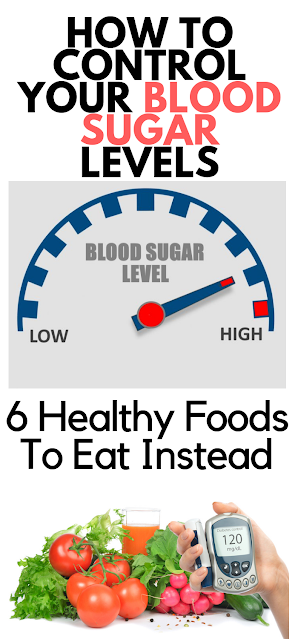Maintaining blood sugar control while following a typical American diet can be difficult. Sugar and refined carbs make up a large portion of the average American diet, and these processed foods sharply raise blood sugar levels.
The glycemic index was created to assist diabetics in controlling their blood sugar levels. Any given food containing 50 grams of carbohydrates is subtracted from the 50 grams of fiber (which is not digested) to arrive at a number. Foods with a higher glycemic index will cause a greater spike in blood sugar than those with a lower index.
However, relying solely on the glycemic index to manage diabetes can be challenging. Dietary and lifestyle changes can be highly effective, particularly if the emphasis is on whole foods and the elimination of refined and processed carbohydrates.
Not everyone with type 2 diabetes will need to cut carbohydrates, but some may need to concentrate on low-carbohydrate diets in order to lessen glucose spikes and restore insulin sensitivity. Good carbohydrates, such as those in fruits and vegetables, are advantageous because they provide nutrients that can aid in the recovery of long-term illnesses.
The best way to ensure that eating healthy carbs won’t spike glucose is to choose carbs with higher fiber or to pair them with quality fats and proteins. This will slow down digestion and create a more stable environment as insulin escorts digested glucose into the cells.
When it comes to blood sugar regulation, breakfast is the most important meal of the day. Starting the day off with a breakfast high in protein sets the tone for balanced blood sugar throughout the day. In general, aim for 20 grams of protein or higher.
6 Best Foods to Eat for Blood Sugar
While there are many foods that can be beneficial for blood sugar, there are certain ones that have a knack for helping to keep it nice and steady.
1. Cinnamon
Ceylon cinnamon can help control blood sugar and insulin levels by lowering them. Cinnamon is effective at balancing blood sugar because of the presence of antioxidants, which help improve hormonal communication and proper glucose storage and use.
2. Salmon
Salmon reduces the markers increasing the risk of cardiovascular disease thanks to the presence of anti-inflammatory Omega-3 fatty acids. Blood sugar problems can spark inflammation within the body, but they can also develop due to the presence of inflammatory foods, like those that are rich in omega-6 fatty acids or trans fats. Omega 3’s, like those found in salmon, work to counterbalance the inflammatory problems and restore normal glucose usage in the body.
Salmon is rich in protein and healthy fats, so it won’t spike your blood sugar.
3. Eggs
Rich in protein and healthy fat, eggs are a quick and easy food that makes a good meal or snack. They promote fullness and have a stabilizing effect on blood sugar. They also promote the good kind of cholesterol, which defends against inflammation and chronic health problems. Eggs are rich in folate, B12, selenium, and a host of other nutrients that promote stable blood sugar thanks to a balance between protein and fat.
One of the best (and tastiest) ways to add eggs to your diet is to eat them with avocado, like in these Guacamole Deviled Eggs. Avocado and eggs share similar nutrient profiles and increase satiety, which promotes balanced blood sugar long after you’ve finished eating.
4. Walnuts
While most tree nuts can be beneficial for diabetes, blood sugar, and overall health thanks to their protein, walnuts have some extra benefits.
Walnuts promote healthy insulin levels and weight loss thanks to their high levels of polyunsaturated fatty acids. These PUFAs, as they’re referred to, can help decrease fasting insulin levels by improving hormone communication and glucose usage. Walnuts are also rich in B vitamins, which nourish the nervous system and promote a balanced mood, as well as minerals like zinc, manganese, magnesium, and phosphorous.
Walnuts have a distinctly nutty taste and may not be the preferred snacking nut, but you can work them into your diet painlessly by adding them to a delicious chicken salad.
5. Apple Cider Vinegar
Drinking apple cider vinegar before meals can improve the body’s ability to take glucose into the cells by increasing muscular blood flow and reducing insulin resistance.
Drinking ACV before bed can also improve the next morning’s fasting glucose thanks to better blood flow to muscles, which can be dramatic for anyone battling type 1 or type 2 diabetes.
You can also boost your dietary probiotics by making your own sauerkraut, which can naturally help to lower blood sugar.
6. Chia Seeds
Chia seeds are high in fiber and low in the carbs that raise glucose, making them a perfect blood sugar-friendly food. They also contain almost six grams of protein in a single ounce. Chia seeds are an abundant source of calcium, potassium, phosphorous, and natural antioxidants.
Chia seeds can help address insulin resistance by improving hormone communication and helping the body better regulate blood sugar and insulin levels. This makes them an ideal food for the prevention and reversal of this hormone problem.

